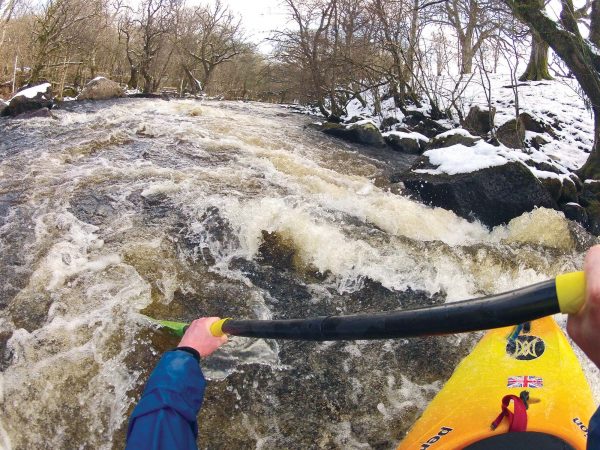
Riding the white water: Kayaking and leadership lessons learned
By Richard Kunst
Industry Operations Lean manufacturingHow the sport parallels manufacturing and leadership.

Downriver racing is like mass production. PHOTO: SUPASTE
I was introduced to white water kayaking at an early age. As I became involved in the competitive side of the sport a couple of different types of challenge emerged: the downriver race where you had to accomplish the shortest time from the start to the finish; or the slalom event, where you had to navigate the course through a series of (typically) 20 gates.
Downriver racing is like doing mass production where skill is minimal but you rely heavily on strength and the state of your equipment – the lightest boat and a strong paddle. In slalom, you need skill and the ability to read water currents to accomplish the best overall lapsed time – like doing a mixed-model or small lot production.
Both types of race require a lot of practice to create the muscle memory needed to negotiate the course. But practice is not enough. You need a coach who looks at your style and offers tips to improve technique, eliminate time wasters and to mentally challenge you to dig down and excel. These coaches are our team leads, supervisors and managers.
As I approached my first competitive race, I asked the coach what I should do at the starting gate. His answer was simple: as the starter holds the back of your kayak and begins the countdown, reach inside to produce the strongest paddle stroke followed by an even stronger paddle stroke. As the count ends and your race begins with your ultimately strongest paddle stroke, you keep that pace until the race is completed.
In today’s manufacturing environment, we give our best and sustain this energy during our daily engagements. We’re aware of the environment but rely on muscle memory to accomplish tasks that we learned during practice.
What else did I learn during those formative years?
Start strong or you’ll be discouraged right from the start, which will only amplify during the race.
Slalom events consist of several mini races. While navigating through a series of gates you gain penalties for missing or touching one. If you view the race one gate at a time, blowing one sequence will not discourage you for the entire race. This makes me a believer in hourly run boards (that tracks targets and compares them to production over a shift).
In slalom, you concentrate on the orientation of the kayak and ensure you never touch a pole. Weight to boat volume is a huge KPI if you intend to win and as you approach a gate, you focus on submerging your boat to sneak under it. This is like single minute exchange of dies (SMED), which is converting as many changeover steps to external (while the machine is running), and to simplify and streamline the remaining steps.
New edge
One of the most important lessons learned stems from the coach who was not big on giving compliments or acknowledging our capabilities. I was not the strongest or most capable paddler on our team, but I did have a need to be acknowledged and perhaps complimented, but it never happened.
Because I was so frustrated with my coach, I took a week away from work to concentrate on my paddling. I focused on improving my elapsed time, worked hard on skill and technique, and over several days I improved significantly. How could he not be impressed with this accomplishment?
During our team practice day, I paddled my sequence knowing it was a personal best. I glided up next to the coach looking for that compliment or acknowledgement of a sequence well done. His response, “You didn’t fall in.”
“What?” I exclaimed. “The purpose is not to fall into the water.”
The coach said he could see that I had improved but since I didn’t fall into the water, I didn’t have a new edge.
So I learned the real purpose of practice: it’s okay to fail.
Richard Kunst is president and CEO of Cambridge, Ont.-based Kunst Solutions Corp., which helps companies become more agile, develop evolutionary management and implement lean solutions. Visit www.kunstsolutions.com. E-mail rkunst@kunstartofsolutions.com.
This article appears in the April 2019 print issue of PLANT Magazine.
